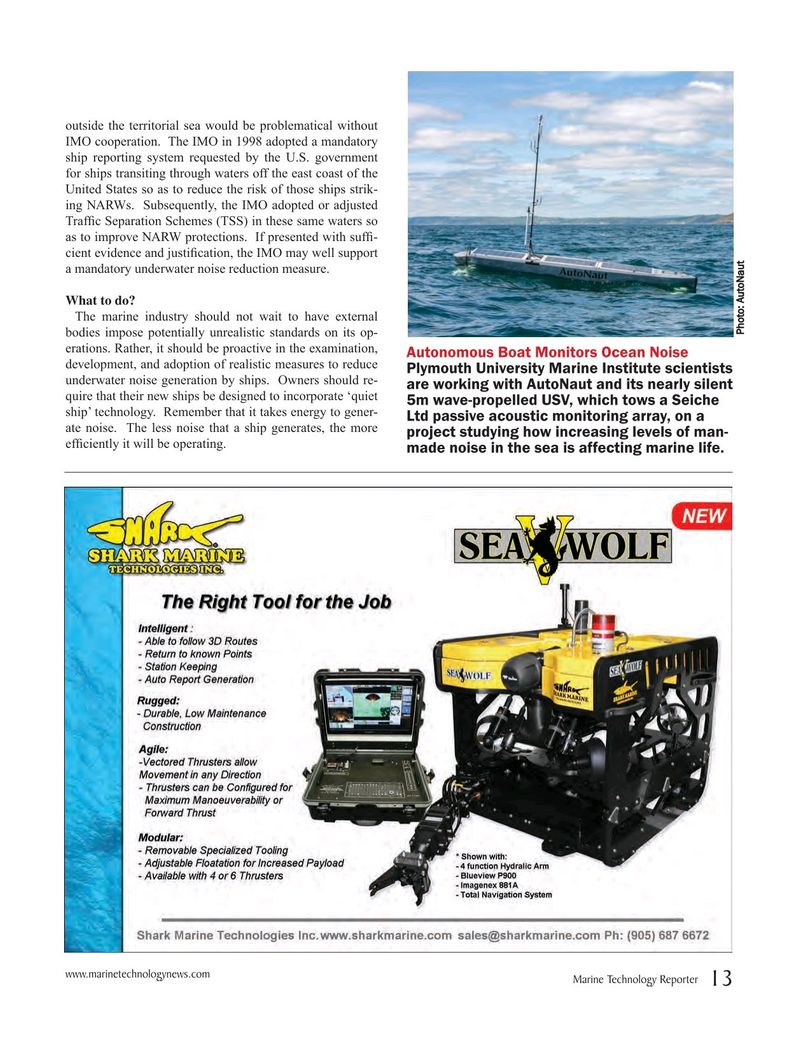
Page 13: of Marine Technology Magazine (October 2016)
AUV Operations
Read this page in Pdf, Flash or Html5 edition of October 2016 Marine Technology Magazine
outside the territorial sea would be problematical without
IMO cooperation. The IMO in 1998 adopted a mandatory ship reporting system requested by the U.S. government for ships transiting through waters off the east coast of the
United States so as to reduce the risk of those ships strik- ing NARWs. Subsequently, the IMO adopted or adjusted
Traf? c Separation Schemes (TSS) in these same waters so as to improve NARW protections. If presented with suf? - cient evidence and justi? cation, the IMO may well support a mandatory underwater noise reduction measure.
What to do?
The marine industry should not wait to have external
Photo: AutoNaut bodies impose potentially unrealistic standards on its op- erations. Rather, it should be proactive in the examination,
Autonomous Boat Monitors Ocean Noise development, and adoption of realistic measures to reduce
Plymouth University Marine Institute scientists underwater noise generation by ships. Owners should re- are working with AutoNaut and its nearly silent quire that their new ships be designed to incorporate ‘quiet 5m wave-propelled USV, which tows a Seiche ship’ technology. Remember that it takes energy to gener-
Ltd passive acoustic monitoring array, on a ate noise. The less noise that a ship generates, the more project studying how increasing levels of man- ef? ciently it will be operating.
made noise in the sea is affecting marine life. www.marinetechnologynews.com
Marine Technology Reporter 13
MTR #8 (1-17).indd 13 9/27/2016 1:24:58 PM

 12
12

 14
14
